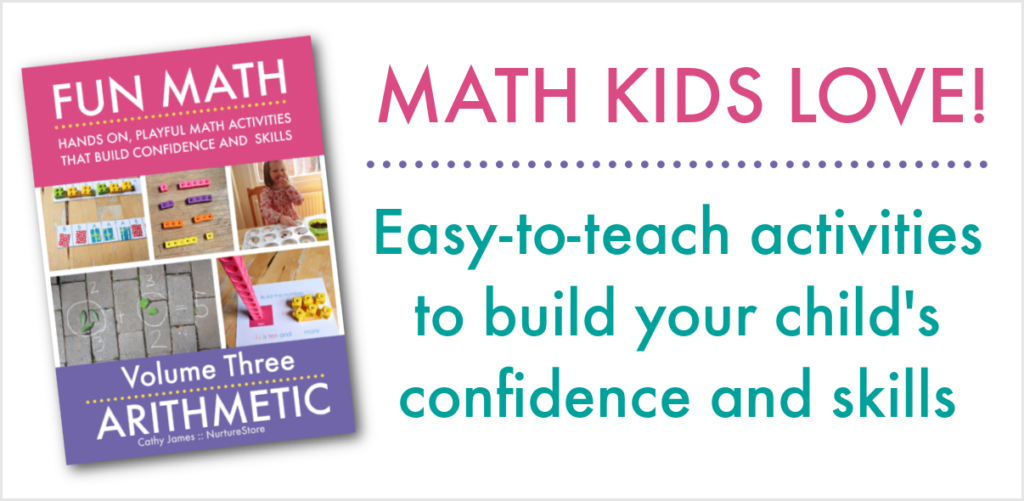Use this Venn diagram lesson to teach your children how to compare and contrast. With over twenty ideas for how to use Venn diagrams in your classroom – including printables and fun suggestions!
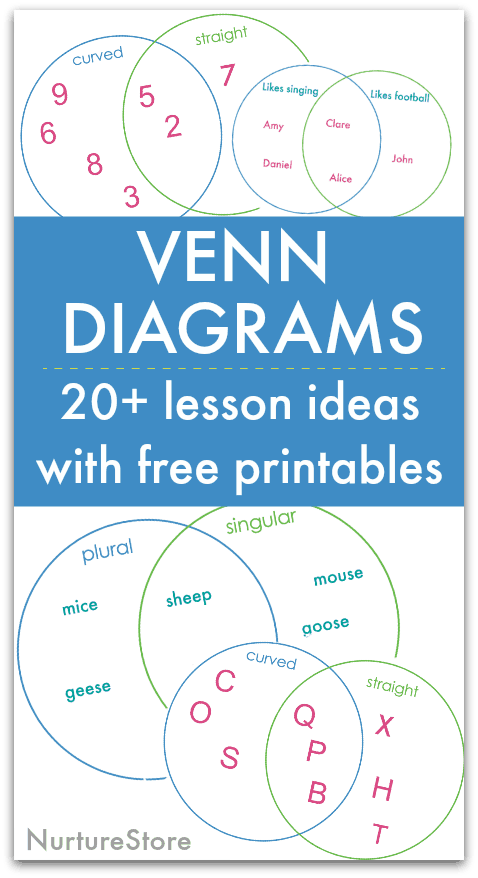
Easy Venn diagram lesson with printable
Watch our Guide to How to Use Math Discovery Centers
Click play on the video above to see our guide to how to use math centers. They are great tools for teaching math to children in a hands-on way and help children learn math skills through play, discovery and practice.
Learn how to make a discovery centre, including themed math centers for numbers, volume, weight, time, measurement and more. Get tips for classroom management and how to use centers in your classroom or homeschool. Plus learn how to get great math printables for your children to go in your math centers.
Subscribe to NurtureStore’s YouTube channel to get more teaching tips videos!
A Venn diagram is a visual way to show how two or more groups of things relate to each other. They let us clearly see how two or more sets compare and contrast with one another
Which things are the same? Which things are different?
There are many different ways we can apply Venn diagrams, both to teach our children how Venn diagrams work, and to practice other math, literacy, and science skills.
Read on for Venn diagram printables and Venn diagram ideas that you can use with your class.
How to use this printable
Print the Venn Diagram sheets (see below).
You might like to laminate the sheets for extra durability, and so you can write on them with a wipeable marker.
Included in the Venn diagram printable are a few suggested diagram comparisons you can use for math and literacy. There is also a blank diagram which you can use to suit your own interests.
Use the ideas below to put Venn diagrams into action!
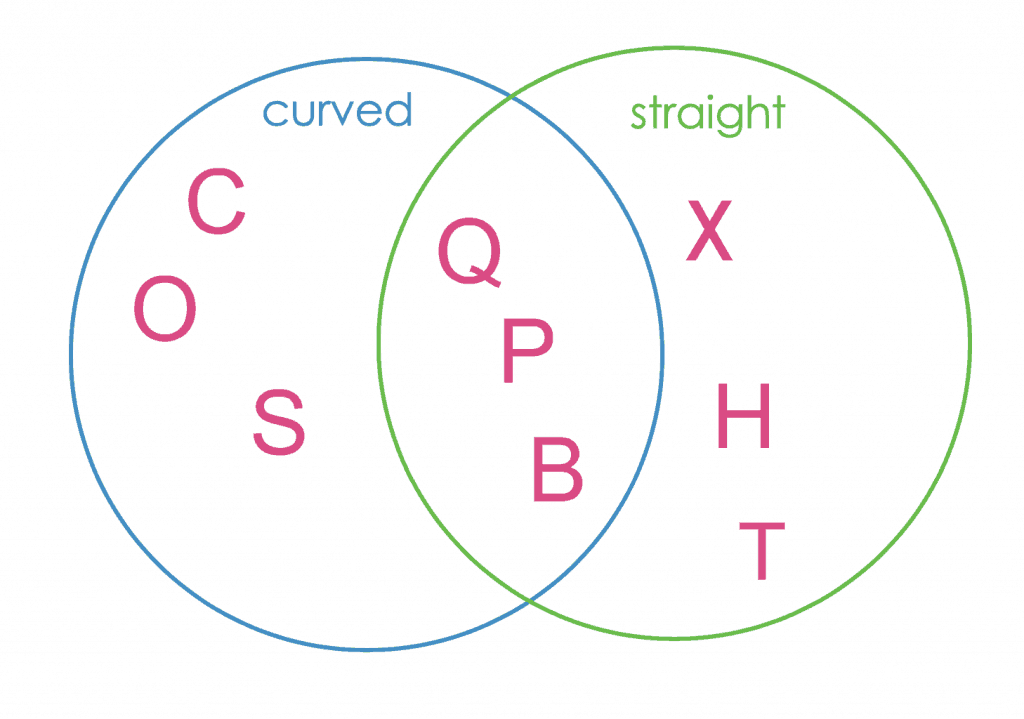
How to teach Venn diagrams
Ask your children if a dog is the same as an elephant.
They probably have a strong opinion that no, a dog is not the same as an elephant. But in what ways is a dog in something like an elephant? They are both animals, they both have four legs, and they both have a tail.
And what’s completely different about them? Take suggestions from your children but they’ll likely mention trunks!
Explain that we can use a picture called a Venn diagram to show how two or more things compare.
A Venn diagram uses overlapping circles. Each circle shows a set of things. Some of the things might only belong in one set, some things might belong in both sets. Where we write the details of each thing shows which of the sets they belong in. Things that belong in more than one set are placed where the circles of those sets overlap.
Show your children how you would draw the Dog and Elephant as a Venn diagram. Draw one circle with the label dog, and one overlapping circle with the label elephant. Then fill in the Venn diagram with the details they suggested.
Where the circles over lap for example, write: animals, four legs, tail
In the part of the circle that is just dog (with no overlap with elephant), write: furry, carnivore, good pet
In the part of the circle that is just elephant (with no overlap with dog), write: trunk, vegetarian, bad pet
Now have your children work in pairs to complete a Venn diagram of their own. You can use the printable sheets (see below) and invite your children to make up their own two sets to compare, or use the suggestions below.
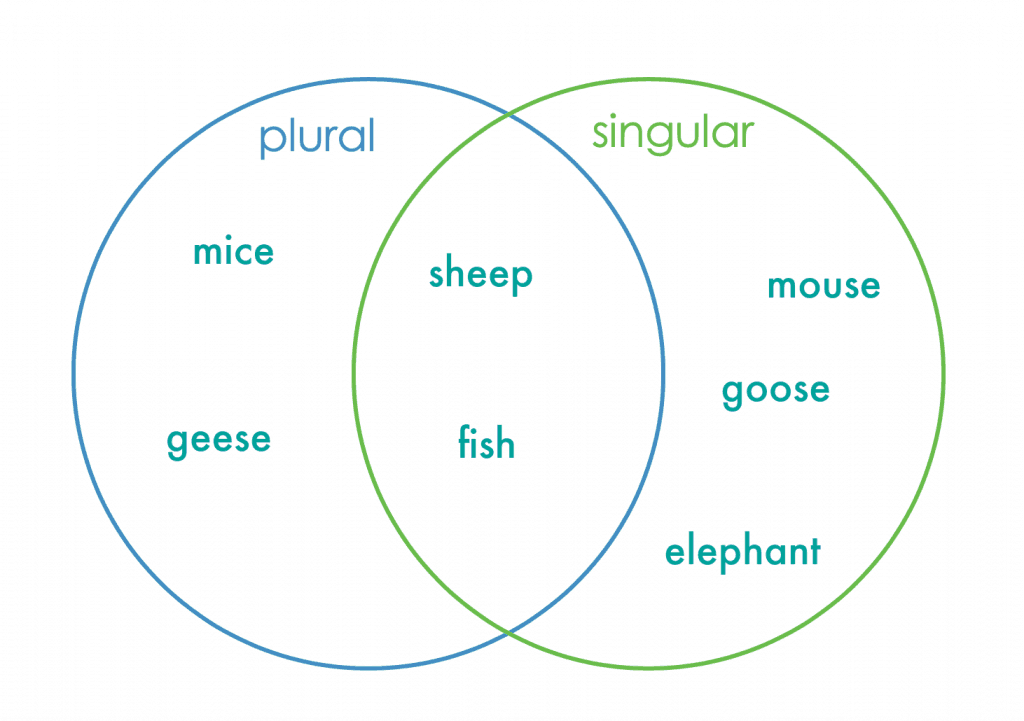
Using Venn diagrams in your class
You can use the following pairs of sets to help your children understand how Venn diagrams work.
You can also use Venn diagrams to great effect to help children learn other skills. You can use them to explore things and concepts, develop vocabulary, memorise facts, start conversations, and build social skills.
You can draw Venn diagrams:
:: on the printable sheets below – laminate them to make them re-useable with wipeable markers
:: on a chalkboard
:: using hula hoops
:: with chalk or ropes to make circles, outdoors or indoors
:: make small ones for individuals to write on
:: make big ones that your children can stand in
:: make it a written exercise or use real things: loose parts or printable cards with pictures / facts on
Try some of these ideas:
Venn diagram literacy ideas
Use Venn diagrams for:
:: comparing letter shapes: are they straight or curved?
:: comparing the letters in your name with the letters in ‘dinosaur’
:: building vocabulary: compare adjectives to describe the ocean and the forest, turkeys and owls, night and day, chocolate and broccoli, bananas and lemons.
:: book studies: compare and contrast Harry Potter and Alice in Wonderland. Fiction and Non-Fiction. Biography and Science Fiction.
:: film studies: compare Jurassic Park to Gremlins
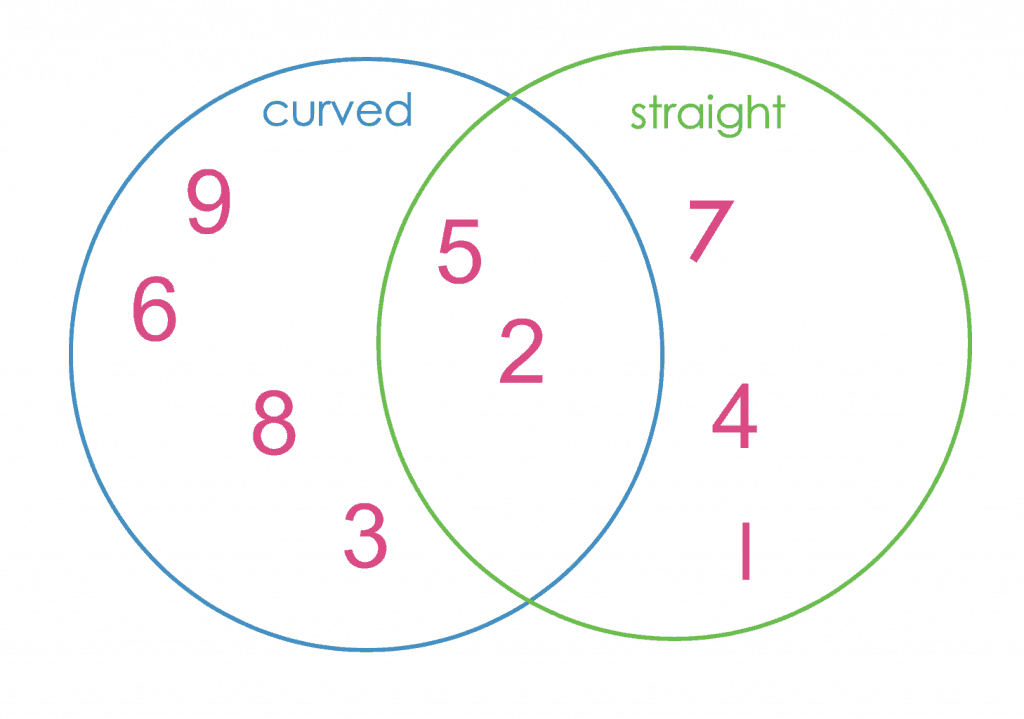
Venn diagram math ideas
Use Venn diagrams for:
:: comparing the shape of digits: are they straight or curved?
:: comparing factors of 12 and even numbers
:: odd numbers and prime numbers
Venn diagram science ideas
Use Venn diagrams for:
:: comparing plants with animals
:: comparing plant cells with animal cells
:: comparing animals: polar bears and pandas, bats and birds, animals and things that fly
:: comparing what lives on land and what lives on water
:: comparing the sun with the moon
:: comparing vertebrates with invertebrates
:: comparing summer and winter
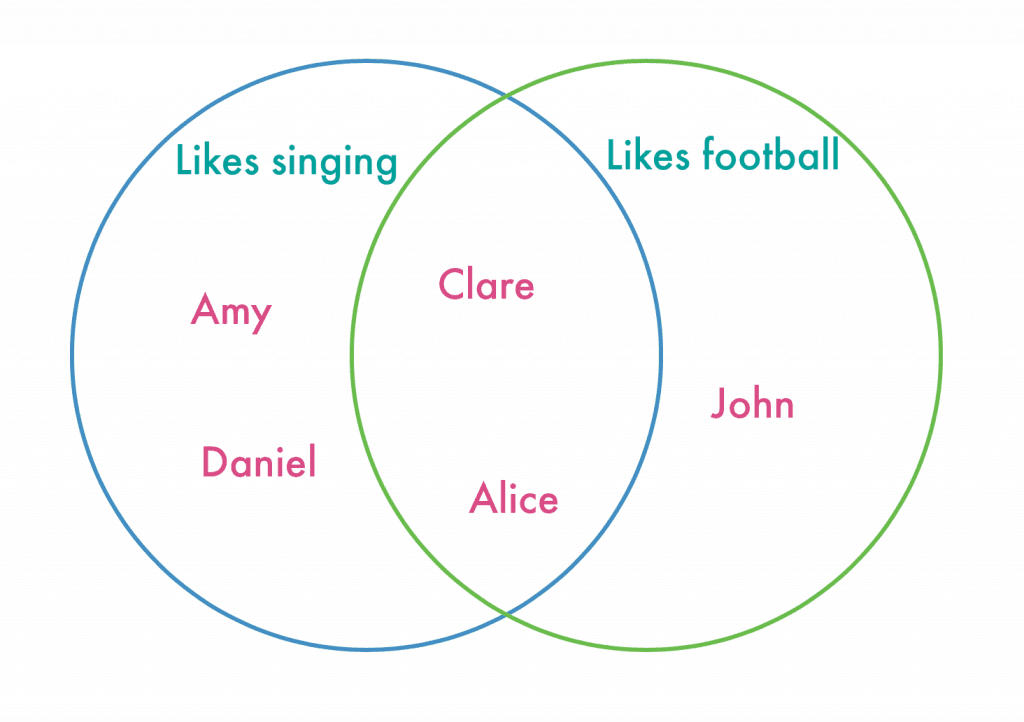
More Venn diagram ideas
Use Venn diagrams for:
:: history, to compare how things are today and how they were long ago
:: New Year, to compare the past year with the new one
:: comparing textures: are things smooth or rough?
:: talking about likes and dislikes: do you like singing and/or football? (These make great ‘Who’s here today?” sign-in questions)
:: talking about how we are individuals: are you sporty and / or artistic?
:: talking about popular culture: compare Beyonce with Taylor Swift
:: talking about historical figures: compare Washington with Trump
:: talking about religion: compare Christianity with Islam, Hinduism with Buddhism
:: talking about behaviour: compare things I do at home and things I do at school
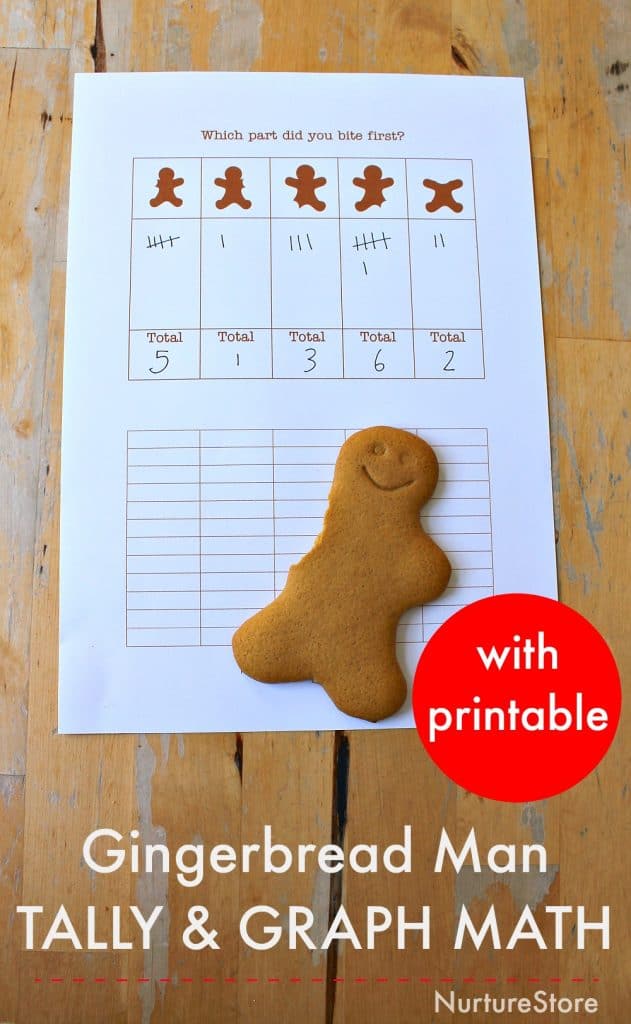
More hands-on math and literacy activities
NurtureStore has many more hands-on lessons in its archive of math activities including these graphing and sorting activities:
:: gingerbread man tally lesson
:: Halloween sorting and graphing activities
How to get our free printables
To download my free printables, you'll need to visit the NurtureStore Printables Library, which is available to all subscribers to my email list, and of course to Play Academy members.
Pop your email address in the form below and you’ll get access to all my free printables, lesson plans, activity ideas, weekly newsletter, and a whole lot more!
After subscribing, be sure to check for the confirmation email. After you confirm your email subscription, we'll send you a welcome email which includes instructions for downloading our free printables.
If you're already subscribed to our email newsletter: check your email for the latest edition of the newsletter where you’ll find a link to access our free printables library - the link is usually at the bottom of the email.
For help accessing our printables, click here.
By subscribing, you consent to our use of your personal data as per our Privacy Policy, which includes agreeing to receiving interest-based email from us.
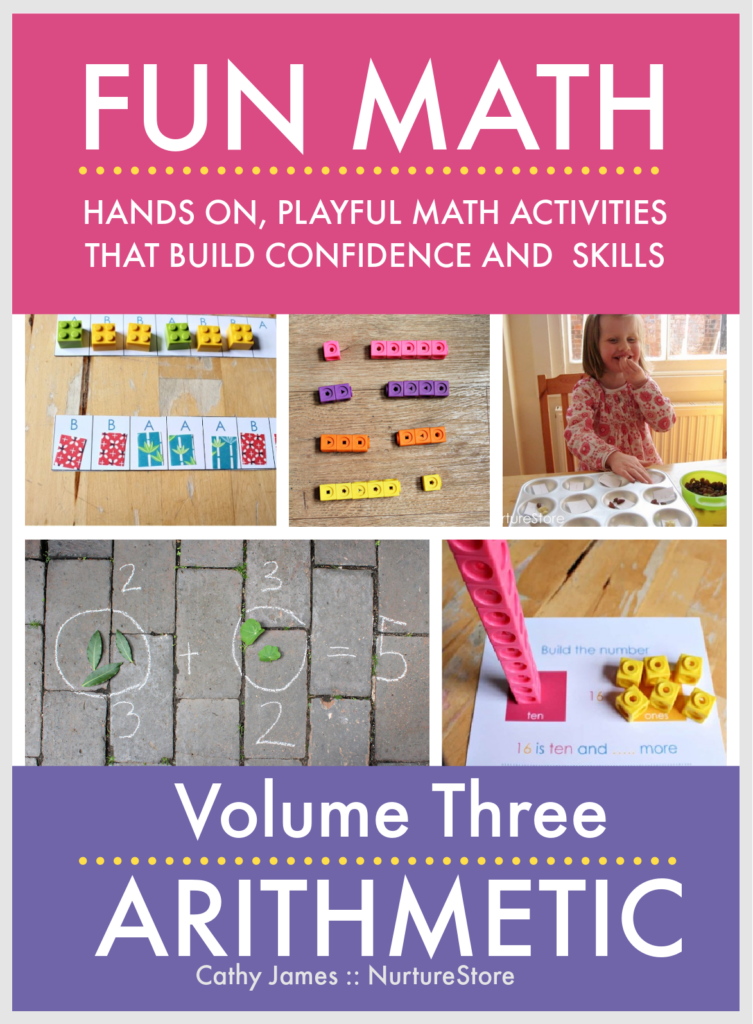
Transform your teaching with Fun Math
The Fun Math series gives you a math curriculum that is easy to teach and highly effective.
Children love these lessons because they are engaging and fun.
You'll have a clear set of ready-made math lessons and activities that are simple to lead using our step-by-step lesson guides, and which children really understand.
Be the best math teacher and boost your children's confidence and skills with Fun Math.
See more and transform your teaching here.
